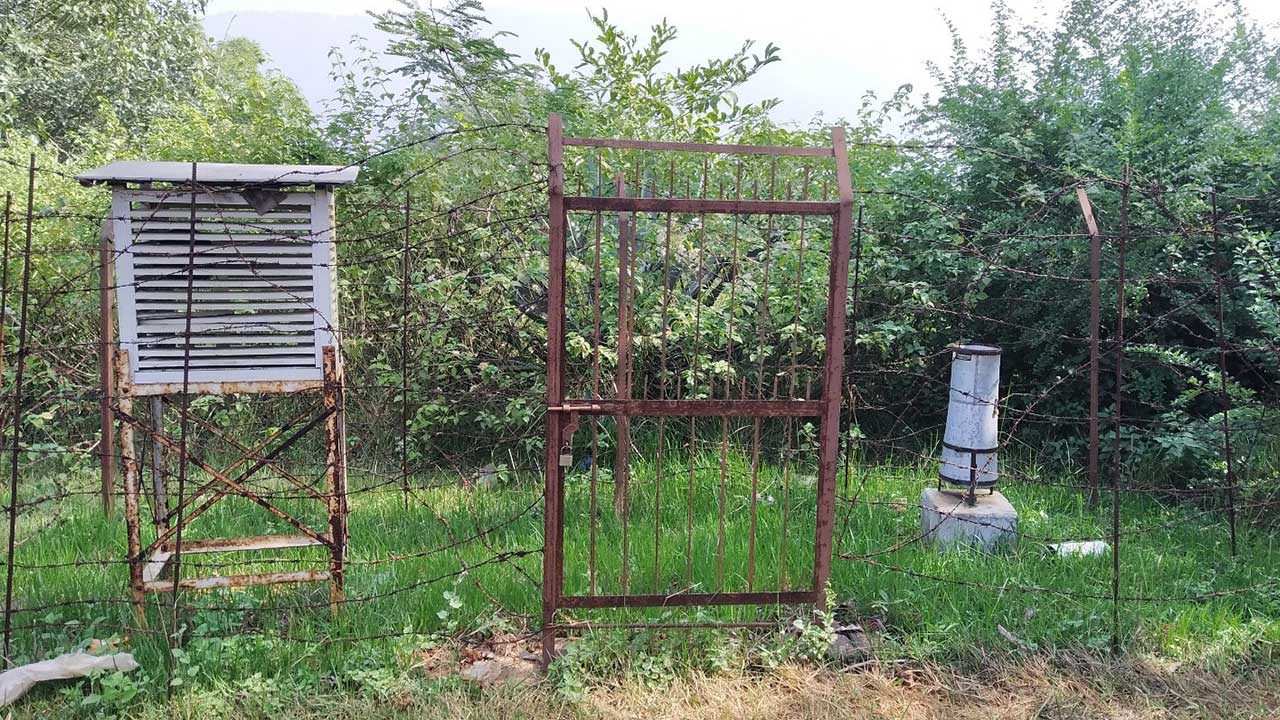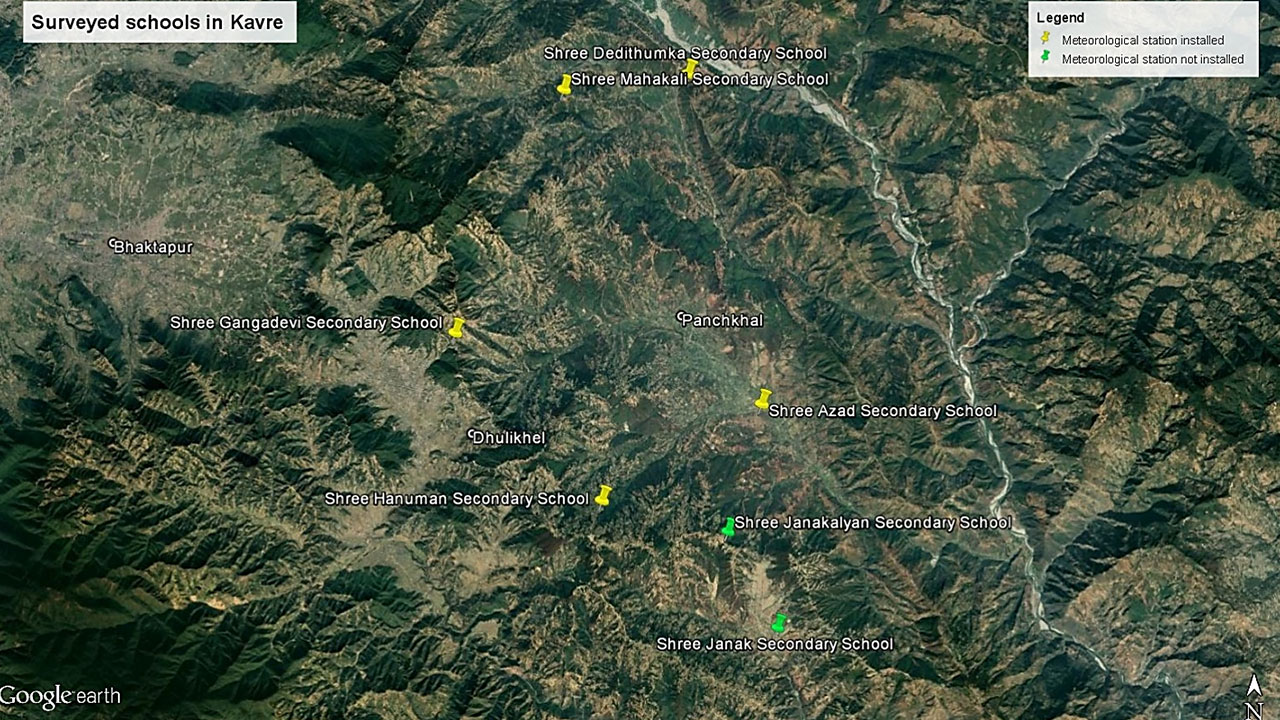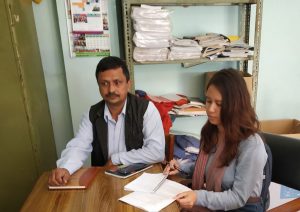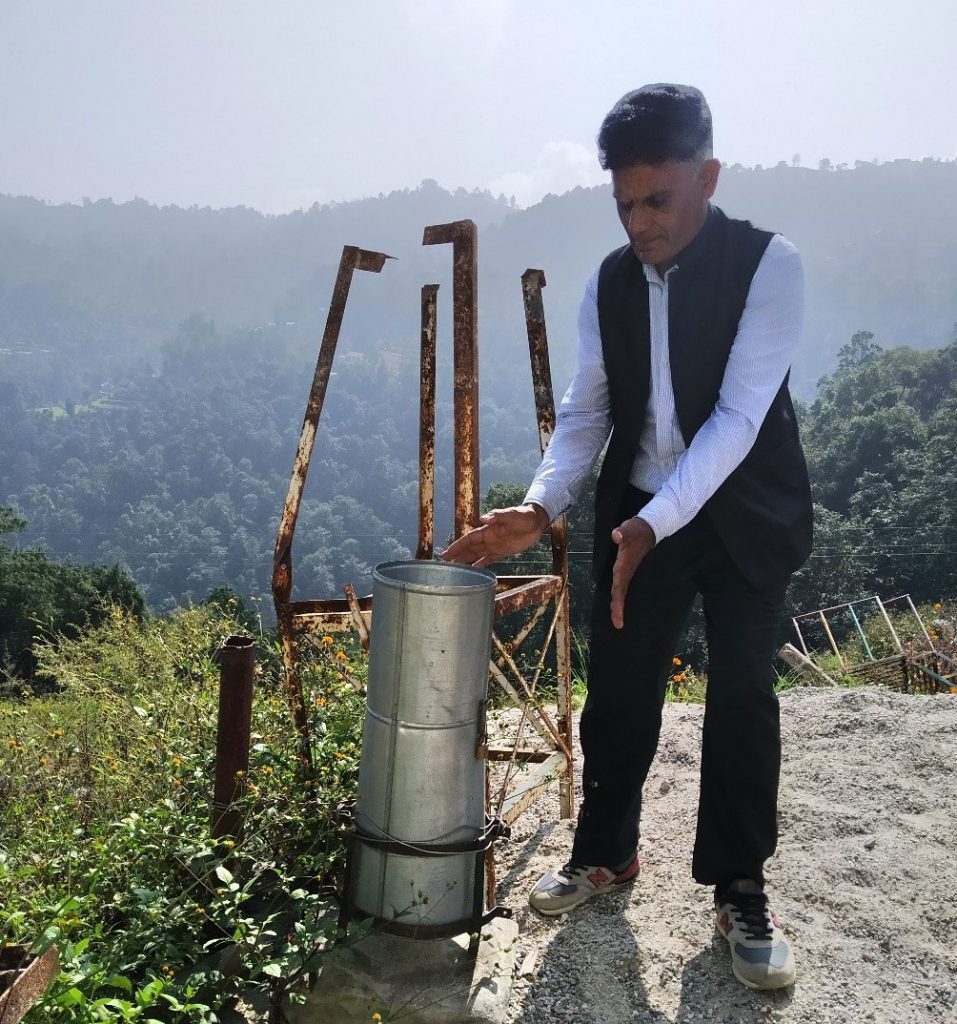This site uses cookies, as explained in our terms of use. If you consent, please close this message and continue to use this site.
 A weather station in Shree Azad Secondary School, Baluwa, Kavrepalanchok, Nepal (Photo: Kabita Nhemhafuki/ICIMOD)
A weather station in Shree Azad Secondary School, Baluwa, Kavrepalanchok, Nepal (Photo: Kabita Nhemhafuki/ICIMOD)
Climate change is taking global discourses and agendas by storm. People across the world are organizing massive movements to demand more substantive and urgent climate action. The fervor for climate action among the youth is also palpable, with campaigns like Fridays for Future and Extinction Rebellion demonstrating increasing youth investment in the planet’s future. Nepal too needs a mobilized, informed youth for concerted climate action. And for this, we need to communicate the science behind climate change to students from an early age through innovative ways, allowing them to fully understand the extent of the issue and to take positive action on climate change.
ICIMOD’s Himalayan Climate Change Adaptation Programme (HICAP; 2014–2016) explored this science–youth connection by partnering with the Center for Environmental and Agricultural Policy Research, Extension and Development (CEAPRED) to establish three weather stations at different public schools in Kavrepalanchok District in 2014. These stations generate long-term granular weather data, which can help students understand how weather data is generated and recorded and generate discussions on climate change. Two more weather stations were added in 2015 and 2016 in two other schools within HICAP’s pilot project sites.
Name of school and location in Kavrepalanchok |
Year of installation |
| Shree Mahakali Secondary School, Nayagaon | 2014 |
| Shree Hanuman Secondary School, Patalekhet | 2014 |
| Shree Dedithumka Secondary School, Kuntabesi | 2014 |
| Shree Ganga Devi Secondary School, Opi | 2015 |
| Shree Azad Secondary School, Baluwa | 2016 |
Table 1. Schools in Kavrepalanchok with weather stations

In the beginning, data were collected daily by the science teachers. Later, they trained students to collect data independently. In one of the schools, an eco-club has been formed for students to collect data daily. The data are reported in school assemblies every day to update all the students about the current weather patterns.
Monthly summaries of weather data used to be submitted to CEAPRED during HICAP’s project duration. CEAPRED then used to send annual summaries of climate data to ICIMOD. The climate data collected from these weather stations situated at different altitudes were used to analyze the variation of weather patterns during the growing season in the pilot project sites – a component of the Resilient Mountain Village approach crafted by ICIMOD.
The devastating 2015 Nepal earthquake damaged many of the weather stations, which are still not back in operation. The schools are planning to repair and relocate these stations within the school soon.

ICIMOD’s Resilient Mountain Solutions Initiative conducted a survey of the five schools (see Table 1 and Figure 1) in 2019 to understand how effectively the schools have integrated the stations into their teaching and whether students have become more interested in learning about weather variability and climate change. Key informant interviews were conducted in each school with the principal; a science teacher; a social science teacher; and two students (1 boy and 1 girl) from grades 8, 9, and 10. Focus group discussions (FGDs) were also conducted in each school with 10 students from grades 8, 9, and 10.
The interviews and discussions indicated that the weather stations were installed in the schools in particular to facilitate hands-on experiences that improve understanding of local weather conditions and environmental processes and their impacts. The topics of weather and climate science are included in the curriculum of both natural and social sciences in the schools. However, the curricula contain only passing references to weather stations and their sensors and parameters. After the installation of the weather stations, students have been able to better understand how these stations work and branch out to other related interests.
The survey found that even community members benefit from the data obtained through the weather stations. Students share information about temperature changes and rainfall patterns with parents, which can help them – to a certain extent – accordingly adapt their farming activities and understand the impacts of climate change.
Data were also shared among different schools in Kavrepalanchok during a meeting organized in 2017 at Banepa. Science teachers or the principal from each school with a weather station actively participated in the meeting, sharing meteorological information about their respective locality. The meeting raised awareness among other schools about the role of weather stations in advancing citizen science and encouraging climate action and in helping communities understand and adapt to changing conditions.

During the survey, many schools suggested that even though HICAP has concluded, CEAPRED should follow up on the meteorological data with the principals and teachers by holding meetings every six months or through phone calls. Such provisions will encourage teachers to take responsibility of the weather stations. The teachers also added that meteorology can be better integrated into the curricula and weather stations should be installed in more schools for hands-on learning and wider dissemination of meteorological information through social media, text messages, local radio, and television.
This survey showed that installing weather stations can have a huge impact on students and their interest in weather and climate change. This is evident from the knowledge gap between students and teachers in schools with and without weather stations, and the enthusiasm among students in the latter for such stations. The generated granular data can be applied in different projects for resource management, improved agricultural yield, flood risk monitoring, and community resilience building, among a host of other uses. Being able to collect data from the stations and analyze it for real-life implications not only boosts the interest of students in meteorology but also helps them forge a connection between climate science and its application to daily activities of people.
If this network of schools with weather stations can be expanded and adequately supported, the future generation of informed and committed students will be able to further push the climate agenda in Nepal and demand the policy changes that are required.